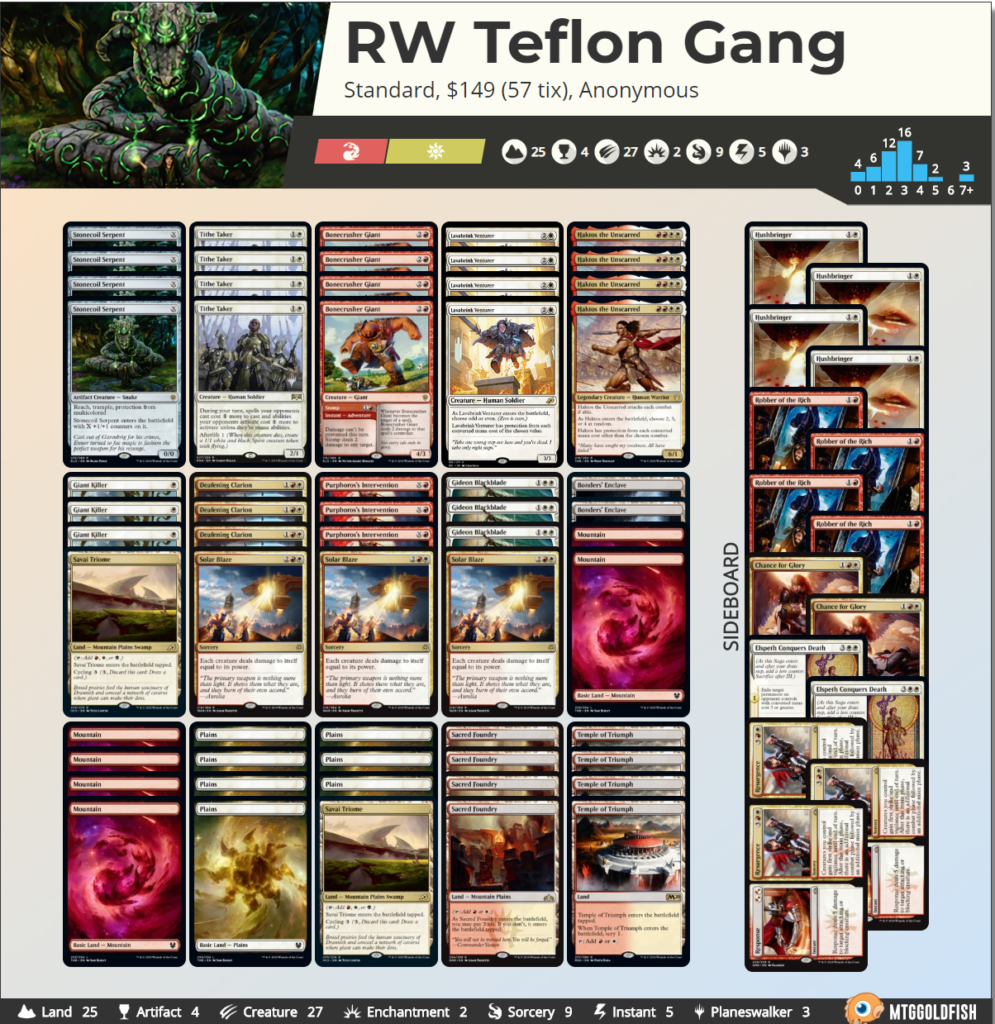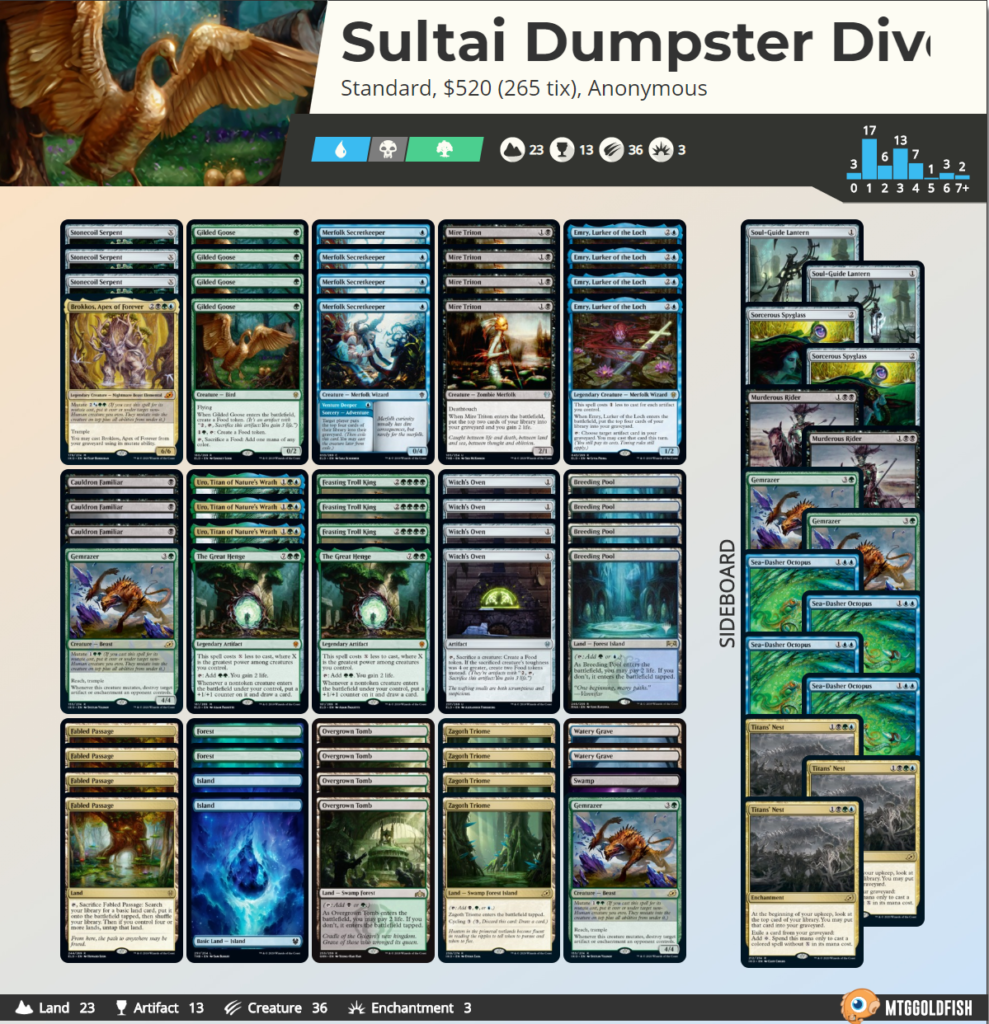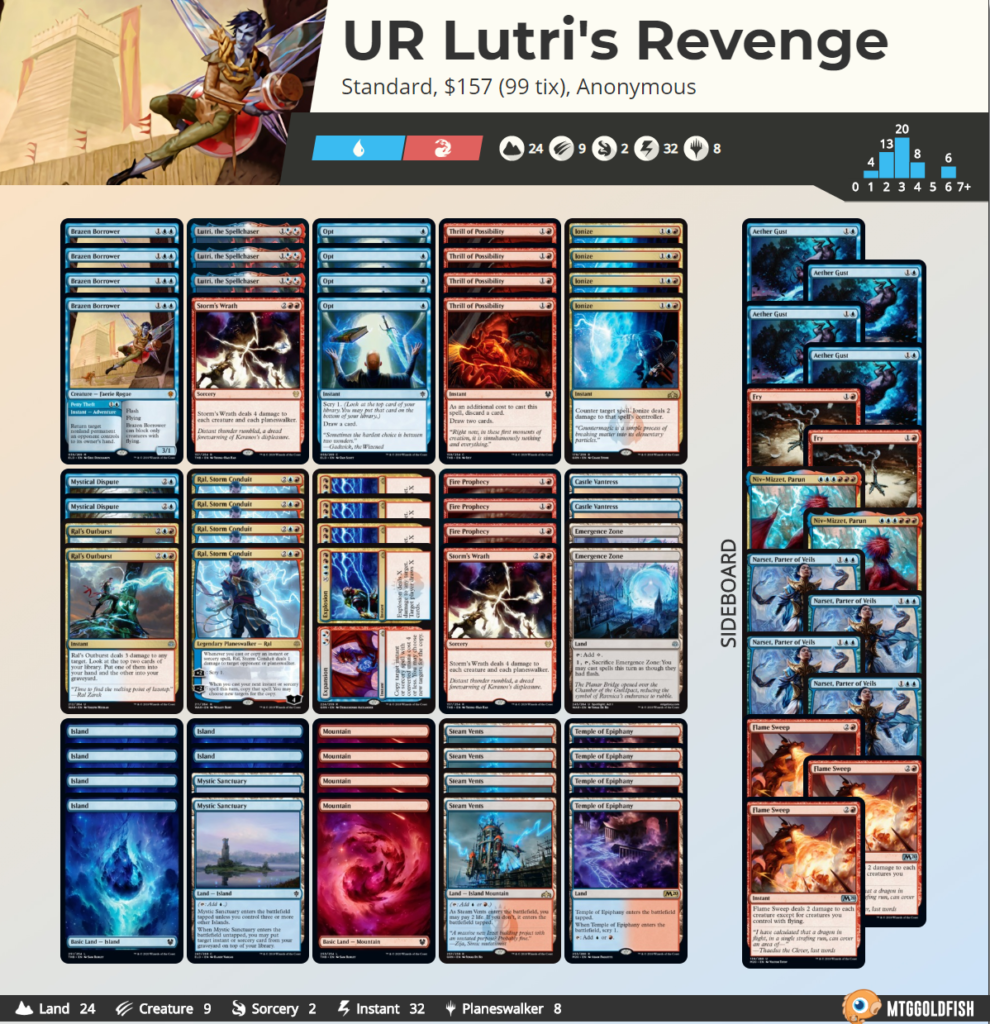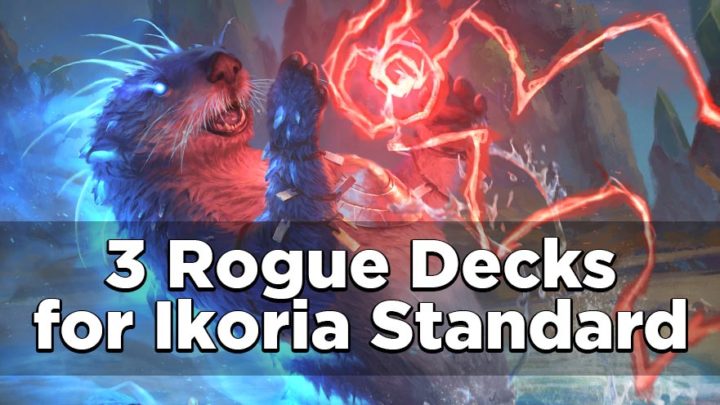We’re somehow into May now, and I’ve found myself writing more and more about Ikoria Standard in recent weeks. We’re at what I’d call the “mature” end of the format, with the largest and deepest card pool possible all on the table to tinker with until the Ravnica sets and M20 rotate out in a couple months.
With so much variety and potential in the format, you’d imagine Standard would be a flourishing field of creative deck ideas. Instead, it seems that the landscape is already drying up, or at least settling considerably.
But this is the only Standard format we have, at least for now. The companions aren’t going away — any banning or wholesale errata of the mechanic will likely happen post-rotation.
To play Standard when things are this solved is to take one of two mindsets. If you have an aspiration to win games and rank up, then 99% of the time, you should pick a top tier net-deck and roll hard. Yorion Lukka Fires and Temur Reclamation in their current forms are almost perfect decks, I am forced to admit through gritted teeth. In a Standard format where nobody ever runs dry of cards or mana, these decks will bulldoze almost anything in their path. The best choice against them is mono-red Obosh aggro, or RWx cycling for a budget option. These decks don’t leave much room for innovation, either; just focus on tweaking your last few slots and perfecting the match-ups, for that is the path to victory.
Now, that’s not to say you can’t still try and come up with your own special Standard sauce. On the contrary, now is a great time to explore — that rich landscape of niche synergies and deck engines is still around here somewhere. I’ll offer up three favorites here for those kindred souls who are looking for something fresh to kick around the Arena ladder.
None of these lists play a companion; by the time I was done plugging synergistic cards into the strategy, I’d usually disqualified myself from the available choices. So if you’re looking to make a statement against the ubiquitous critters with your deck selection: here, you’re welcome.
THE TEFLON GANG – BOROS PROTECTION MIDRANGE
Those who’ve read my Pioneer Gideons primer from a couple months back will know that I have a preternatural fascination with playing sweeper effects in beatdown decks. If you can find a way to make the sweepers one-sided, you have a brutally effective game plan against opposing creature decks that most won’t see coming.

Order the full list from Card Kingdom or export it to MTG Arena.
Current Standard has a critical mass of white creatures with protection or indestructible, which lets us play them alongside damage-based red sweepers like Deafening Clarion, Storm’s Wrath and Solar Blaze. Lavabrink Venturer, Haktos the Unscarred, Gideon Blackblade and Stonecoil Serpent are our threats of choice here. In addition to surviving our own spells, their defensive abilities can humiliate opponents caught skimping on interaction. When greedy ramp decks try to defend themselves with Teferi bounce and flying shark tokens instead of Shatter the Sky, we will flourish.
This game is definitely showing the downsides of a midrange list as we clutch three largely useless anti-creature spells. But when Lukka Fires simply can’t answer two of our first three threats, it doesn’t matter.
If there are any question marks about this list going forward, they’re for speed in greedy match-ups and card advantage in grindy ones. Fleshing out the curve with cheap creatures is tough to justify when they’ll die to our next sweeper. Serpent was my best concession, as an early one can pressure Teferi and it can be scaled up as the game goes long. But even if you open with Venturer on turn three (set it to odd to have it live through both sweepers) into Haktos turn four, you’ve still dealt 20 damage by turn six. Just use your removal to clear any eligible blockers.
DUMPSTER DIVE – SULTAI FOOD “DREDGE”
I’ve had some variant of this one kicking around since just after Eldraine release, when I was baited into deck-doctoring a friend’s “food dredge” list. Apart from a one-week flash in the pan when Ondřej Stráský had everyone online trying a similar UG list, I haven’t seen synergistic food decks come close to competitive viability. Which is a shame, because they are surprisingly strong when you line everything up.
Here, my opponent’s decision to cycle a shark in to block my Familiar was punished by this sequence: play second Oven, sac second Familiar to get my third food, reanimate Feasting Troll King, cast Great Henge for just two mana, tap it to cast Uro and trigger Henge, sac Uro to second Oven (with his triggers on the stack) for two more food, use food to reanimate both Familiars (two more Henge triggers). With just three lands in play!
The Yorion decks can go over the top of even this nonsense, but with a fast start, you’re capable of getting under them. And with Ovens to dodge exiling removal, you have some potential to grind as well. The deck definitely gained a dimension with the addition of mutate in Ikoria, a mechanic I’ve been weaving into various decklists. With 11-12 one-mana creatures and another eight two- and three-drops we don’t care about much, this deck will never lack mutate targets and the surprise damage from making a big mutant to immediately attack can punish opposing Planeswalkers or just speed up the clock against the decks which can out-value us.

Order the full list from Card Kingdom or export it to MTG Arena.
Gemrazer is a good rate whether you cast it or mutate it, and its mutate trigger has value against every meta deck except Cycling. Brokkos is a blessing for our delicately-calibrated package of self-recurring threats, and I have considered trying a second. Both have trample, which works great if you mutate either onto the deathtouching Mire Triton, and Gemrazer can mutate onto Stonecoil Serpent to inherit Serpent’s counters. I considered Boneyard Lurker as a feasible way to buy back Emry and restart our graveyard chains, but the presence of Uro and Brokkos means we no longer rely on her as much as we once did.
Heavy graveyard use means this deck is always on the transformative sideboard plan, but now we play mutators instead of Rotting Regisaur. Titans’ Nest offers a replacement source of graveyard value, which works so long as our opponents don’t exile the contents. Spyglass can name Lukka and Teferi to shut off that deck, and putting a Lantern into play basically turns off Zenith Flare from the cycling decks.
Editor’s Note: Cauldron Familiar has been banned from Standard effective August 3, 2020.
THE OTTER’S REVENGE
The companions have been among Magic’s most contentious creatures from the moment they were first revealed, with adorable UR otter Lutri, the Spellchaser copping high-profile bans in Commander and Brawl before Ikoria even released. Since then, however, it’s Lurrus and Yorion that have gone on to dominate every corner of Constructed, leaving Lutri almost totally unplayed.
While a very well-costed card and nice to have in your command zone, the consistency hit from playing a singleton deck for Lutri is far harder to deal with than playing 80 cards for Yorion. The otter ends up falling into the bottom tier of companions with Umori; it combines the most difficult deck restrictions with a mediocre body and effects which, unlike the other companions, isn’t going to end the game by itself.
Well, most of the time.

Order the full list from Card Kingdom or export it to MTG Arena.
This deck returns to the year-old combo kill with Ral, Storm Conduit. It plays cheap countermagic and creature removal to put opponents off balance until a gap opens to land the four-mana Planeswalker. If you haven’t seen it before, this is a funky combo which requires two Expansion//Explosion and Ral in play. As soon as anybody casts any instant or sorcery spell, cast the first Expansion copying their spell (be sure to hold priority/use Full Control mode online), then cast the second Expansion targeting the first Expansion before any spells can resolve. Do it right, and you get a true infinite loop of Expansions copying each other, each triggering Ral to ping your opponent until they’re at zero.
The main reason to come back to this combo is Lutri! The otter can replace the second copy of Expansion, giving us some redundancy if we need to use some Expansions on earlier turns (often to turn a counterspell or Duress back at the caster). We build accordingly, playing cheaper cards than usual to try and set up some turn 4 or 5 value copies. Thrill of Possibility is particularly nice to copy with Ral’s ability or a spare otter, as you end up discarding one card and drawing four!
The hardest part of this combo is ensuring Ral has room to function, and I’m still not certain what approach is best. I also made a Temur version of this deck, which was able to run Root Snare, Growth Spiral, and other ramp cards to power up to 6+ mana quicker for the combo. It had about the same win rate or slightly less than this “Izzet Flash” version, which instead tries to control the board until Ral is set up.
It’s quite possible that the current best version of Ral combo is just a slightly edited version of Temur Reclamation. The incredible resource advantage the best archetypes enjoy is a real obstacle for rogue decks in Standard at the moment. You might find more enjoyment folding this deck idea back into the more established Reclamation shell, and there’s nothing wrong with that. But I would try to keep in mind what the strengths of your brew are, and try to avoid simply becoming a worse Temur Reclamation. Finding your lane as a brewer is the key to pursuing cool decks!
COMMIT TO HAVING FUN
A Standard environment like this one can be a challenge for those who want to win on their own terms. The top-decks are extremely well-rounded and powerful, and most brews will lack tools to deal with both the aggressive Obosh decks and ultra-greedy Yorion lists. It’s helpful to acknowledge to yourself that when you bust out Mono-Blue Self-Mill or Storm Herald Combo or 5-Color Cat Tribal, you’re setting different goals for yourself and your deck. Hope for the wins, prepare for some tough losses, and be sure to savor the moments when your combo comes together.
At its best, brewing in these mature environments is a fun learning experience. You might discover some tech you can implement when you switch back to a meta archetype, or which will become important after rotation. Whatever you do, match your goals to your approach and own your choice — you’ll have fun.

Tom’s fate was sealed in 7th grade when his friend lent him a pile of commons to play Magic. He quickly picked up Boros and Orzhov decks in Ravnica block and has remained a staunch white magician ever since. A fan of all Constructed formats, he enjoys studying the history of the tournament meta. He specializes in midrange decks, especially Death & Taxes and Martyr Proc. One day, he swears he will win an MCQ with Evershrike. Ask him how at @AWanderingBard, or watch him stream Magic at twitch.tv/TheWanderingBard.

